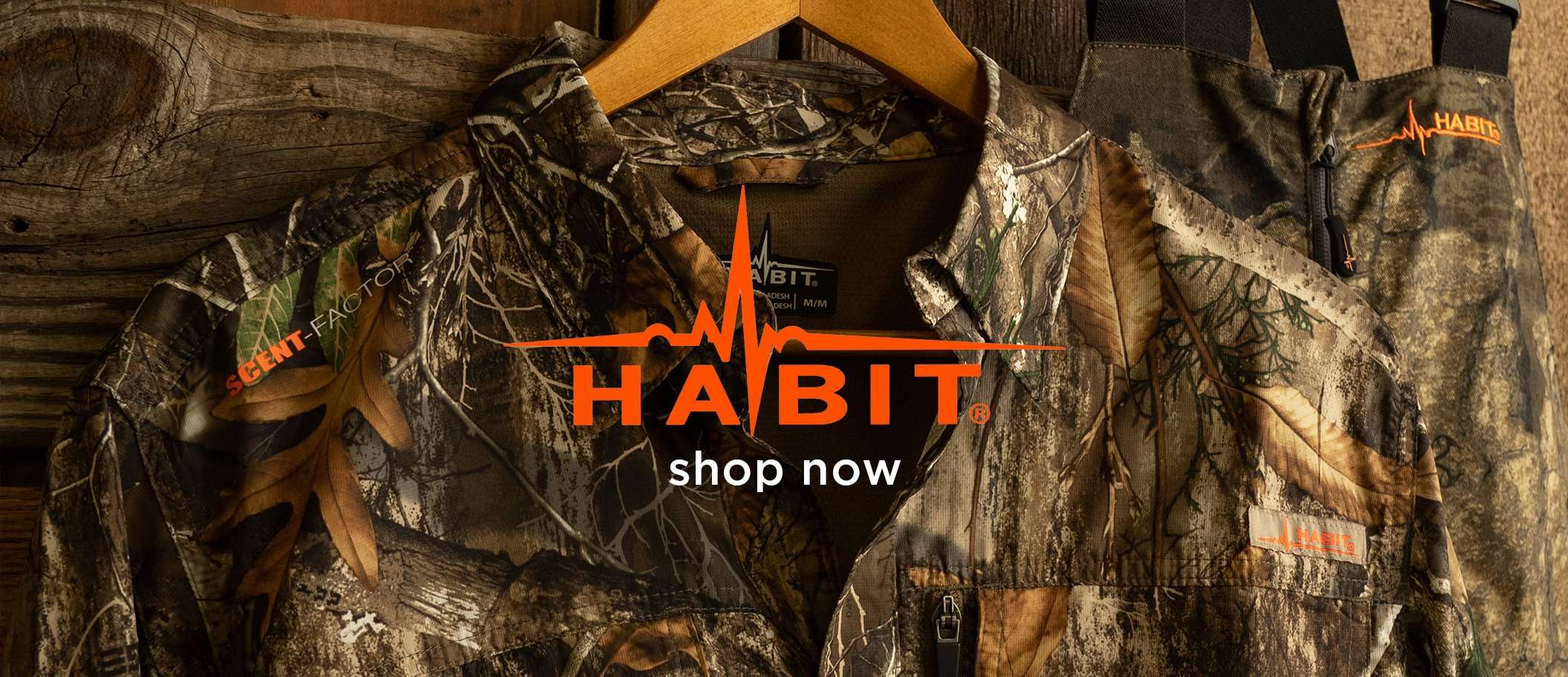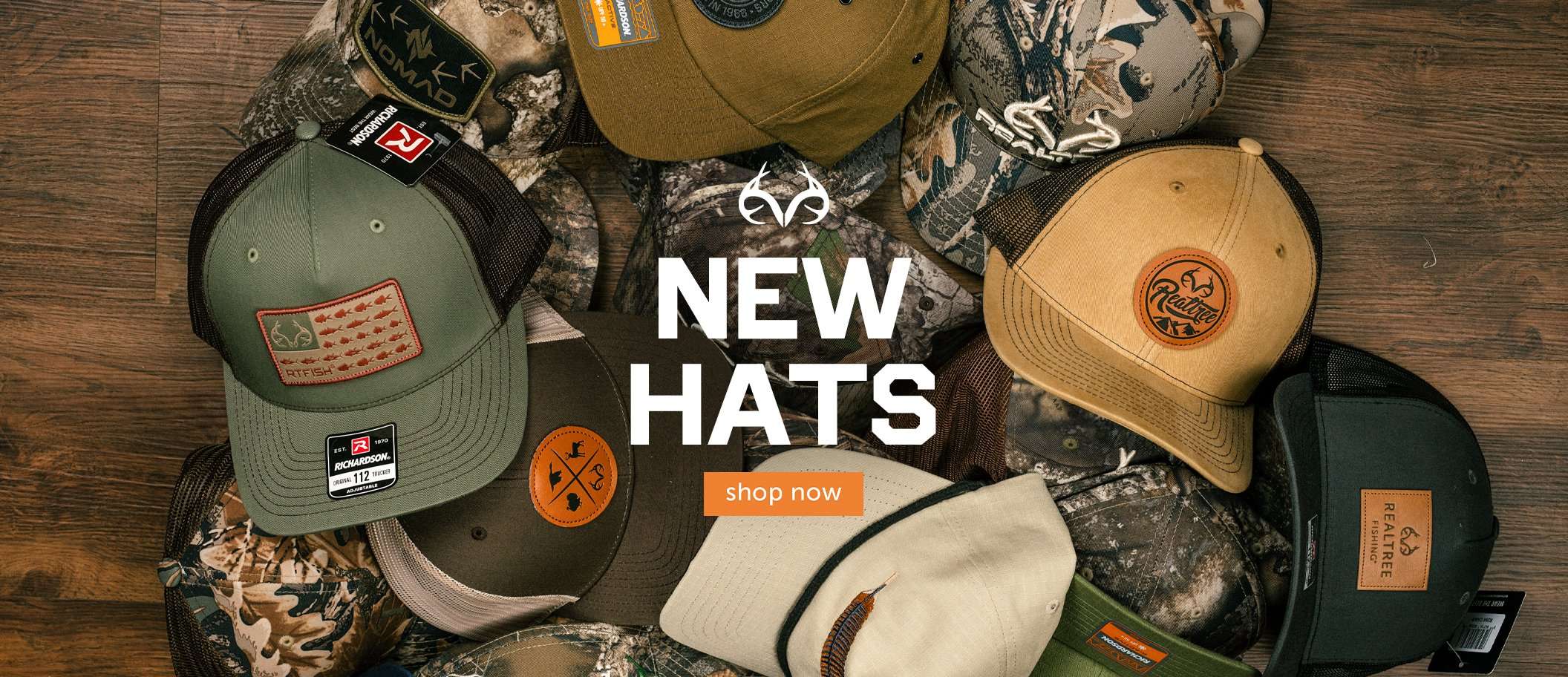Want to know what bucks are around to hunt this fall? Place your trail cameras in these sure-fire locations.
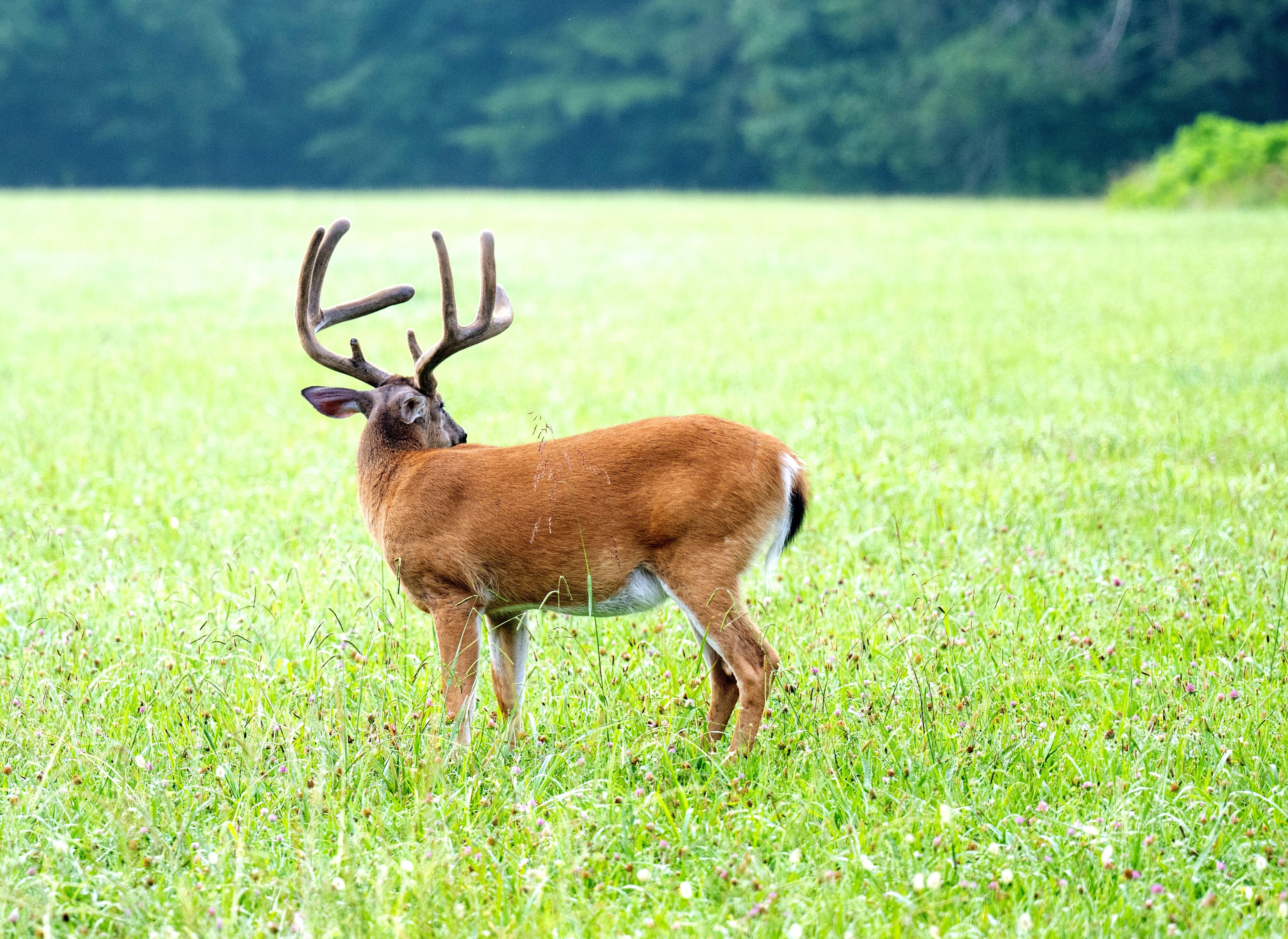
Bucks hit alfalfa and clover fields religiously during the summer, making them great spots for trail cameras. Focus your cameras primarily at field entries. (Photo by Tony Campbell)
It never hurts to know what bucks are roaming the areas you hunt ahead of season. Most of us would hate to shoot a nice 8-pointer if we knew that a world-class buck was frequenting the same property. Likewise, many of us would hold off on an up-and-coming 10-pointer if we knew that an ancient bully 7-pointer was hanging around. Inventorying bucks with trail cameras is a great way to determine a baseline of what to shoot and what to pass for the next season. The final weeks of summer, when bucks are on some of their most predictable patterns of the year, is the time to do the legwork, too.
But where should you place those cameras? Before putting one anywhere, check your local regulations, as trail camera laws are changing rapidly. But assuming you’re legally in the clear, these six locations are prime for summer scouting.
DON’T MISS: The Earliest Hunting Seasons In the U.S.
1. Water Sources
Summer is practically synonymous with heat, and in some regions, drought, too. Deer drink more water in these conditions, same as you, which makes water sources a great bet for capturing trail camera photos of them.
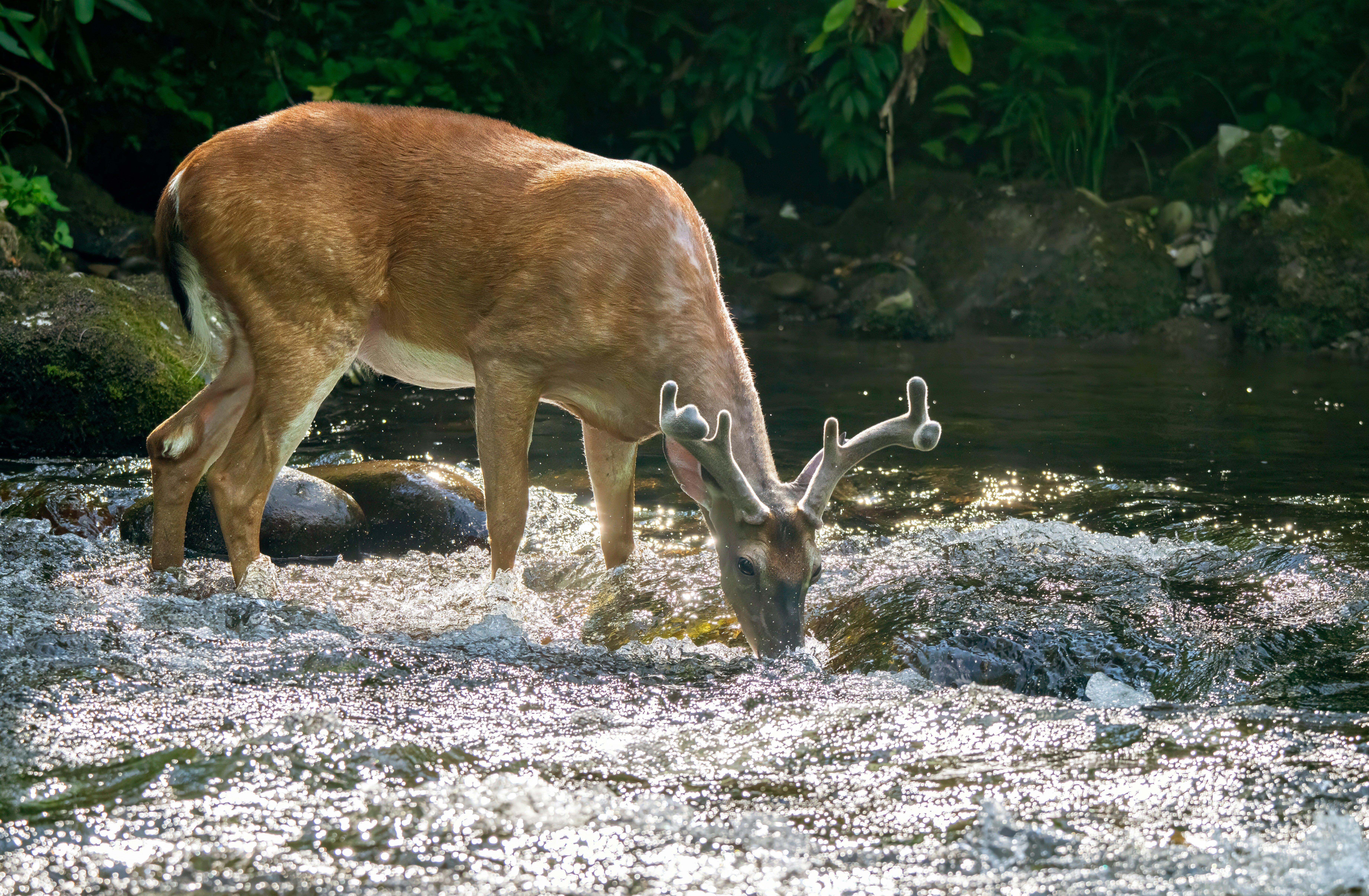
Sweltering summer heat means that bucks need to hydrate. Ponds, lakes, creeks, rivers, and waterholes are all good bets for capturing images of velvet bucks. (Photo by Christopher J Barger)
Of course, large water sources are difficult to monitor. Trails and crossings can lead you to watering areas on large creeks, rivers, or lakes but the best water sources are small and secluded, especially if they’re between a food source and a bedding area. These are easier to monitor with trail cameras due to their smaller size, and when it comes to bowhunting, you’re far likelier to get a shot if the pond or waterhole is small enough that you can shoot the entire length of it from your treestand or ground blind.
Regardless of the type of water source you have — or have to create (hint, hint) — hanging trail cameras nearby is a good way to get a photo of a big summertime whitetail.
2. Mineral Sites
Summer is a critical time for nutrition as fawns are growing and bucks are developing their antlers and packing on pounds in preparation for the rut. There are a lot of minerals on the market, and it isn’t too late to put some out, provided it’s legal where you hunt.
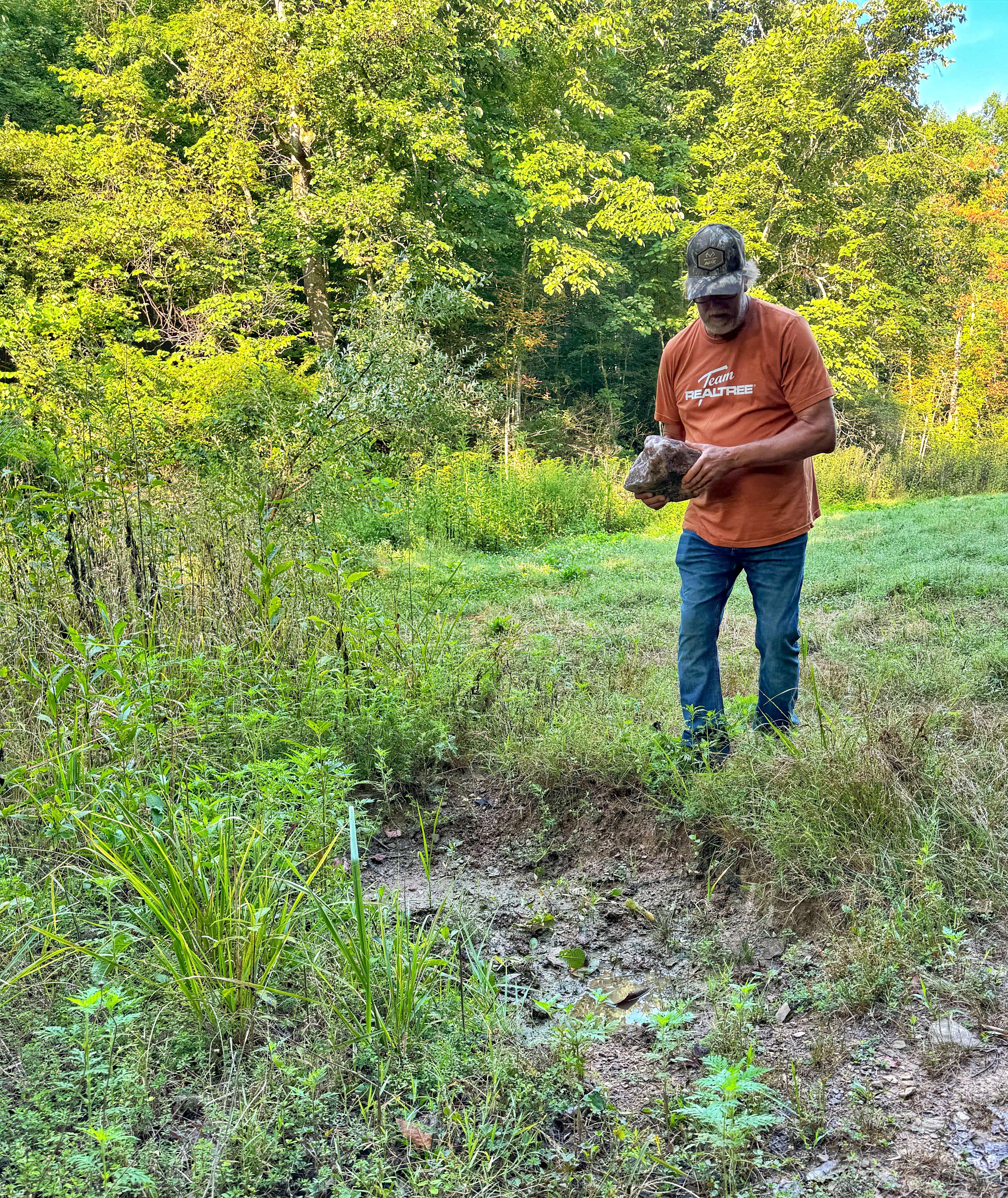
Bucks crave minerals as they finish growing their headgear and prepare for the fall. Where it is legal, a mineral site can be a top location for inventorying summer bucks. (Photo by Stacy Konway)
If the rulebook gives you the green light, mineral sites are great areas to get pretty much all of the bucks in the area in front of your trail camera. Not only are bucks more tolerant of one another during the summer months, but they also crave minerals and supplements. It isn’t uncommon to have a dozen bucks hitting one mineral site.
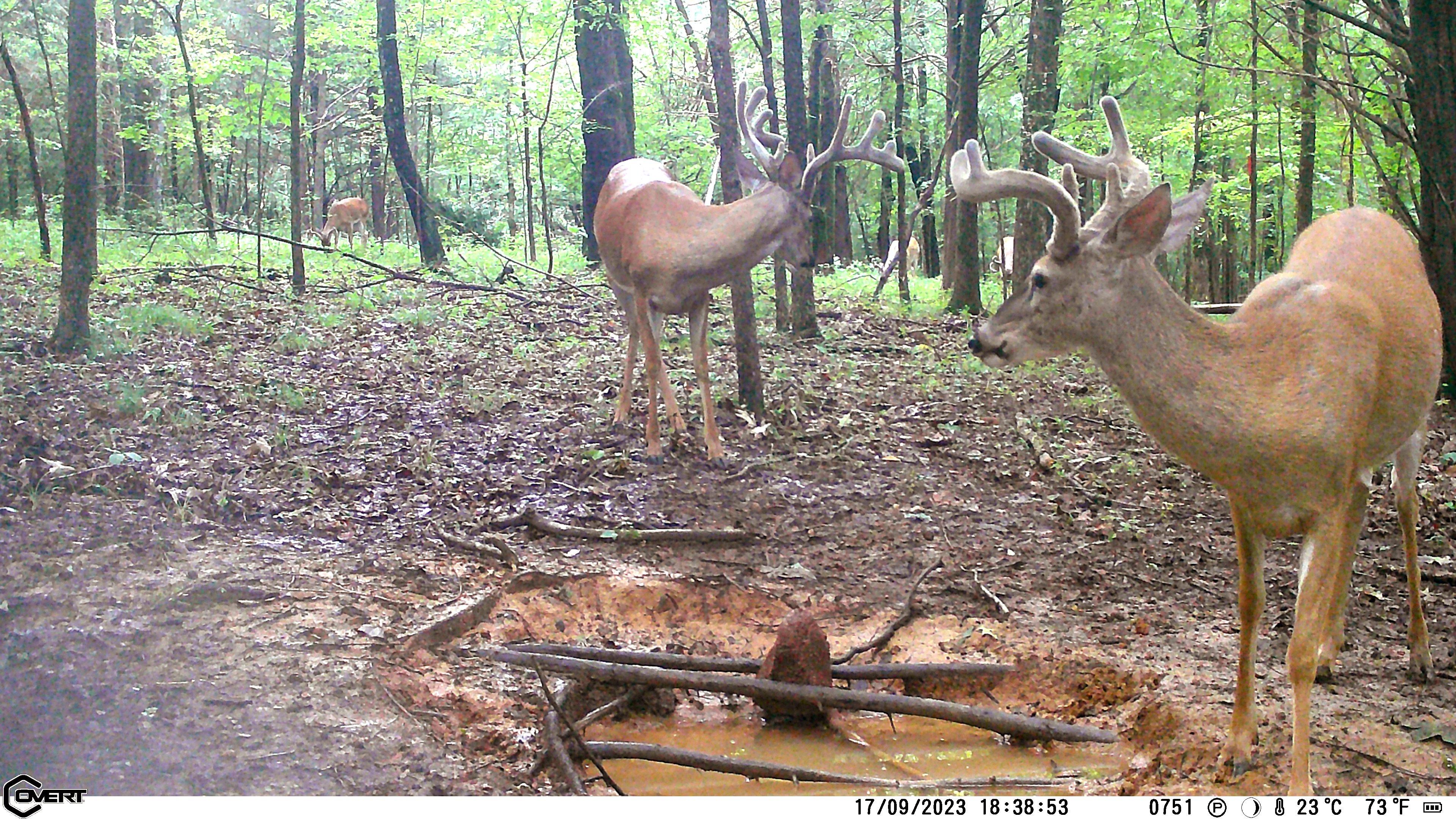
Bucks are very tolerant of one another during the summer, so when you capture an image of one buck, you likely capture images of several bucks. (Photo courtesy of Will Brantley)
As a side note, while deer will certainly visit a plain salt block, it’s better to create a site with blends specifically formulated for deer, which provide the salt they crave along with the minerals they require.
3. Alfalfa or Clover
Sit back over a luscious clover or alfalfa field adjacent to bedding cover on a summer evening, and you’ll more than likely see a bunch of deer feeding in the field during the last hour of daylight. You might even see a bachelor group of bucks. To bolster your scouting efforts, set a trail camera or two on the field at common entrances. Often, you’ll capture images of bucks that don’t appear while you’re glassing the field in the evenings.
If you’re a public-land hunter, be on the lookout for naturally occurring clover. Some clearings and trails are full of it. Also, parcels that are managed by state agencies sometimes have clover that is planted to attract wildlife and provide hunters with a better hunting experience. Be on the lookout for such scenarios.
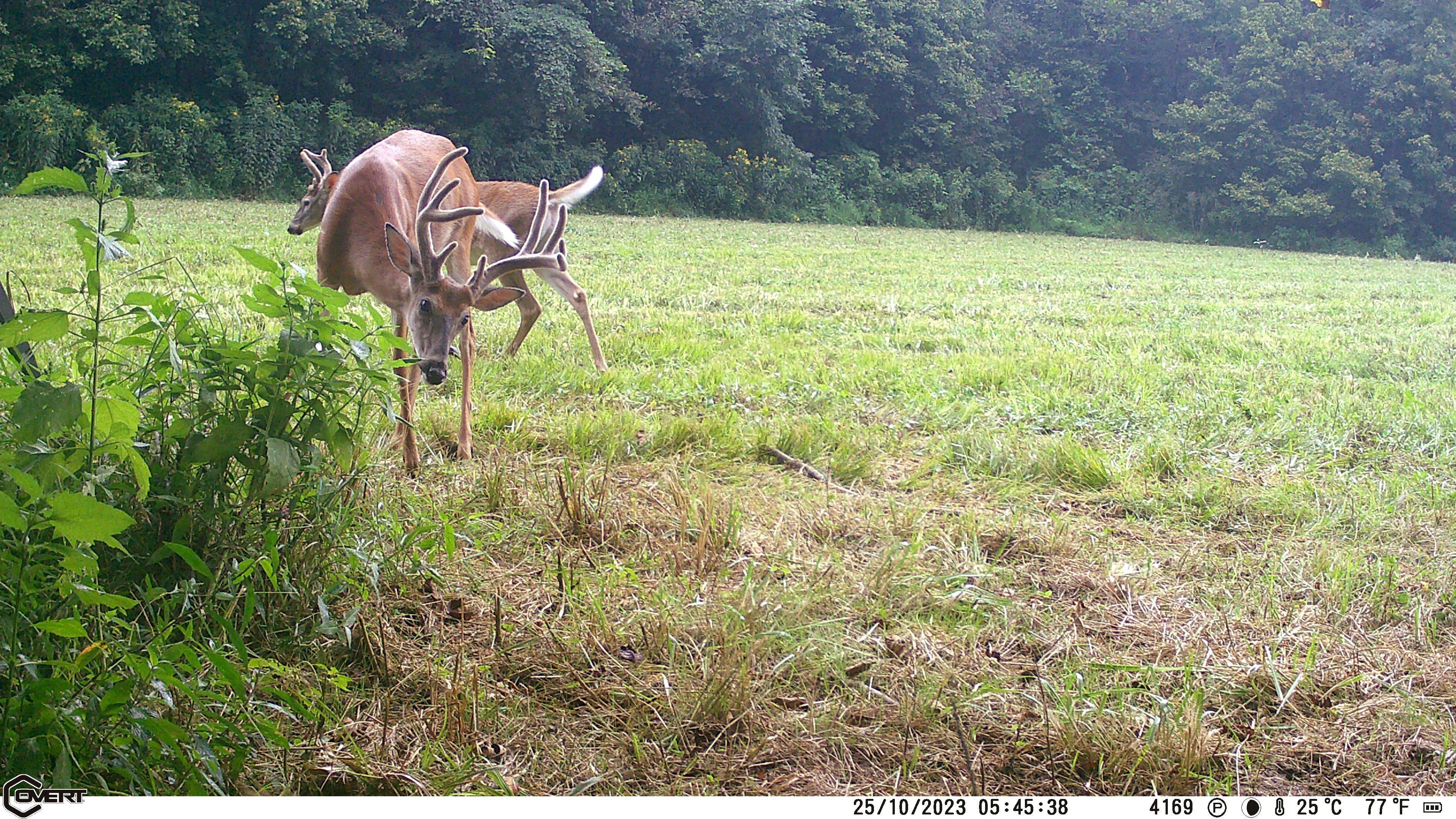
Although alfalfa and clover fields are attractive to bucks, just about any type of green field or plot will draw deer during the summer and early fall. (Photo courtesy of Will Brantley)
4. Fruit Trees
Fruit is like candy to deer, and late summer is a great time to set trail cameras over virtually any type of bearing fruit tree, since most are ripening this time of year. Apples, plums, pears, and persimmons are all very attractive to deer and again, public-land hunters can take advantage of this, too. Plenty of public parcels have wild fruit trees. You just have to burn some boot leather and be attentive to locate them.
Check Out Our Newest Camo Pattern: Realtree APX
5. Cornfield Edges
Although deer might be primarily eating grasses, clover, and alfalfa this time of the year, cornfield edges are great because deer often travel them. The edges make easy walking paths, while the standing corn provides cover that makes deer feel more secure. Further, deer commonly bed in standing corn, especially in more open habitats with less timber. When they get up and mosey out of the corn, they often walk the edges first, which allows them to hop back into the corn stalks at the onset of perceived danger. Identify the most traveled edges and hang a camera or several.

Deer often bed in standing corn and walk the edges before fully exiting. An evening behind binoculars near a cornfield is a good start before diving in and hanging cameras along the edges. (Photo by Stacy Konway)
6. Corn Pile
As with mineral sites, be sure to brush up on the regulations prior to putting out a bait pile. But if legal, this can be a great way to put bucks in front of the lens. While corn alone is attractive, adding nutrition-packed supplements to the corn can make it even more attractive, especially to bucks as they finish growing their antlers.
DON’T MISS: Grilled Venison Topped With Cowboy Caviar
With the summer heat and foliage, bucks often travel shorter distances to feed. If you suspect is bedding nearby, establish a corn pile within 300 yards or so of it, and see if he shows up. Even if you don’t want to hunt over the bait, knowing that he’s close by can be the clue you need to tag him come early bow season.
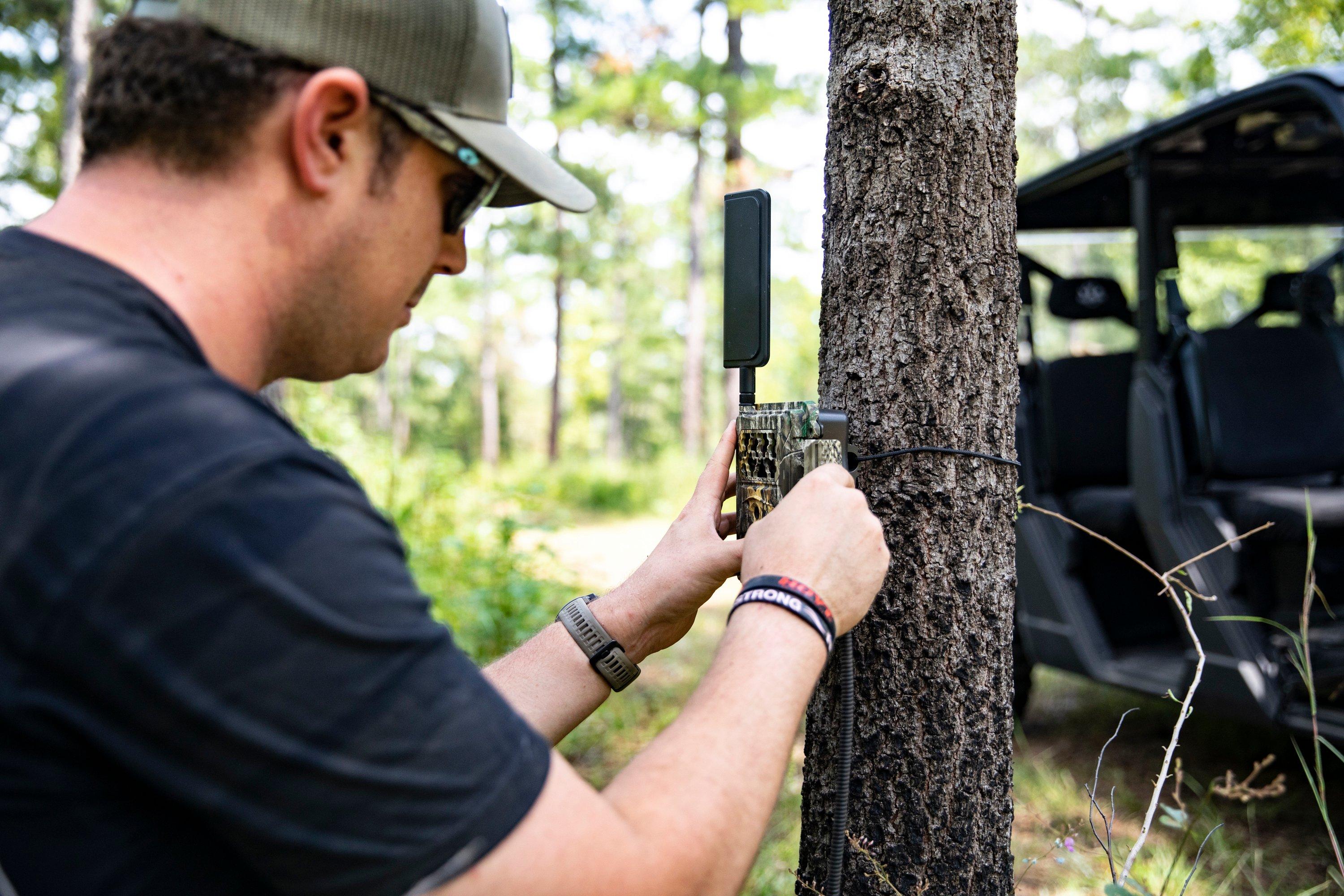
If trail cameras are legal to use per local regulations, put some up right now to see which bucks you’ll be chasing this fall. (Realtree Photo)
Now’s the Time!
Summer is flying by, and before you know it, we’ll be donning our camo and heading for our treestands and ground blinds. If you don’t have trail cameras out in at least some of the six aforementioned locations, then you’re probably not as ready for opening day as you could be.

